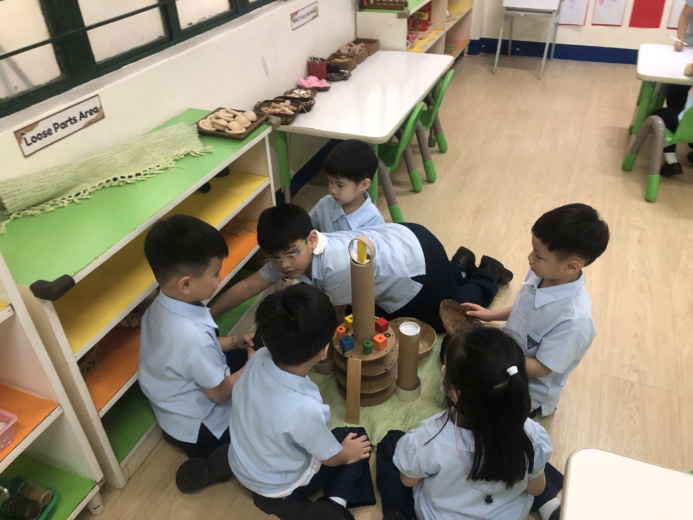Shaping Young Tinkerers through Loose Parts Play
BY MICARL ABRANTES
Enter a preschool classroom at Hope Christian High School, and you will see the little big world of young Hopeans. These spacious classrooms accentuate the tiny chairs, tables, and cabinets that are perfectly sized for pupils who are small but terrible. Its walls are wide enough to display the IB key concepts and lines of inquiry, and the essential agreements that guide the daily interactions of the students. There are also designated areas for experiential activities like reading and dramatic play. However, one silent corner of each room particularly turns into a place where the impossible happens. In this area, tables or wooden shelves stood too low, which prop trays and baskets of sorted shells, buttons, pebbles, clips, tissue cores, fabric strips, popsicle sticks, and wooden blocks. The purpose of each piece depends, but this random collection of natural and synthetic materials is the core of Loose Parts Play.

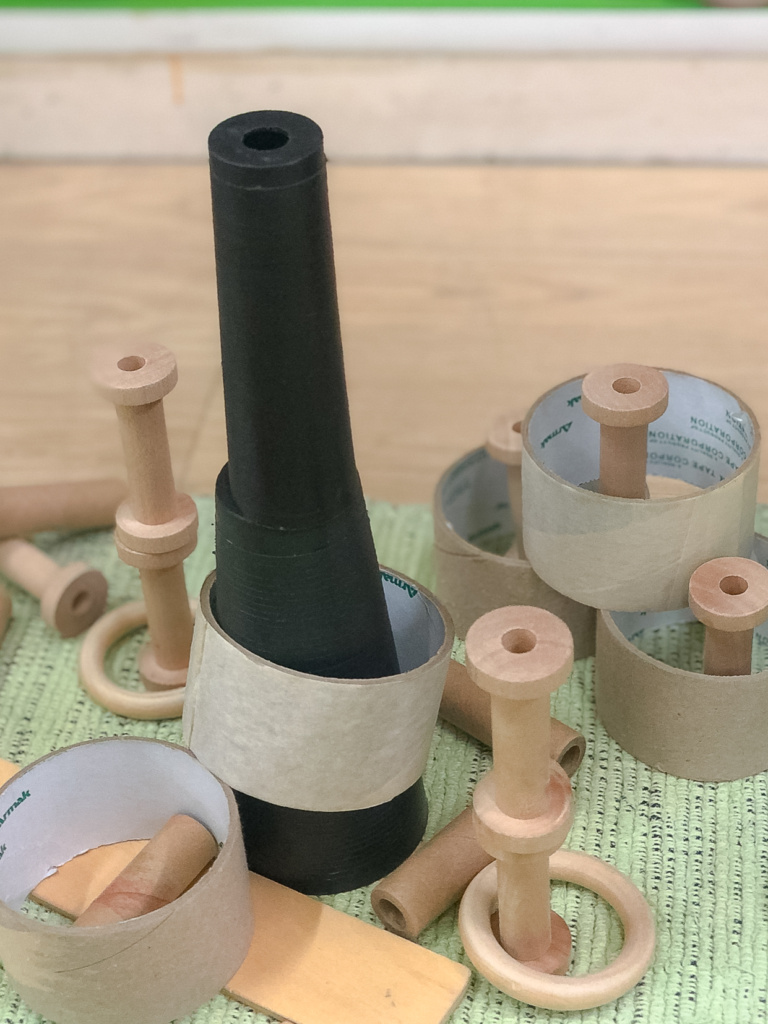
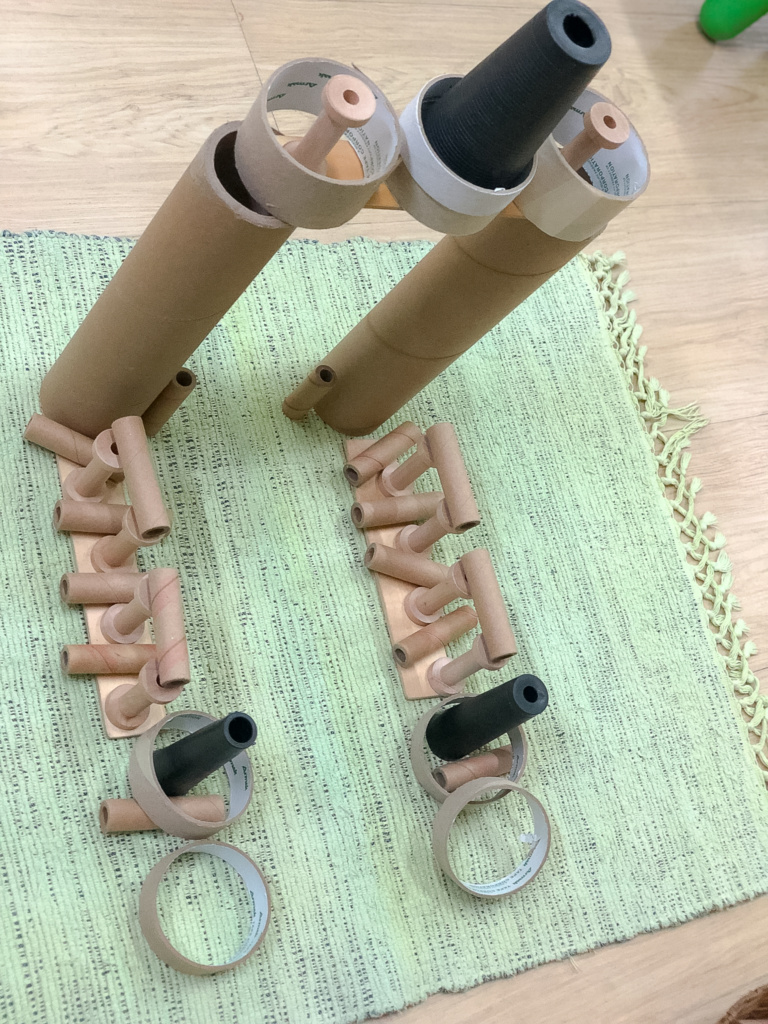
Who would have thought tape and tissue cores, wooden planks, bolts, nuts and rings, and plastic cylinders would turn into a fortress or tower? Preschool pupils did. Materials that are often treated as clutter or trash are the main construction supplies for young learners. To them, these loose parts that are sorted in trays or baskets can be assembled into a new creation. This creating and learning process is what Loose Parts Play is all about.
Loose Parts Play as a Tinkering Process
Learning through Loose Parts Play is like tinkering—it starts with inquiry. According to Teacher Dang, pupils ask questions like, “What can I make something out of this?” when they engage in Loose Parts Play. They ask themselves about what they can produce from the loose parts in front of them. This curiosity marks the start of the learning process.
Just like a tinkerer, preschool students, then, collect the resources they need for their creations. Fortunately, through Loose Parts Play, a regular corner can turn into a tinkering studio. “The loose parts are part of the classroom resources, environment, so we allot shelves,” Teacher Dang said. For Loose Parts Play, children can make use of everyday materials: both natural and synthetic. Natural loose parts can be driftwood, sticks, shells, dry leaves, twigs, dried or fresh flowers. Synthetic loose parts include cups, lids, spools, small plastic or glass containers. To make the creative workflow easier for the pupils, the shelves that are too low for adults are within reach for the pupils. The corner is well-labelled and the loose parts are sorted accordingly. “They are well-labeled, and we introduced them to the students, telling them they can work on it during discovery time and exploration,” Teacher Dang continued.
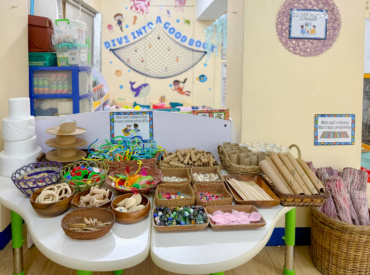
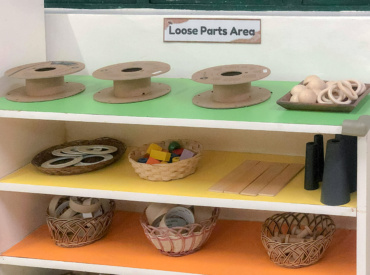
Just like a tinkerer, preschool students, then, collect the resources they need for their creations. Fortunately, through Loose Parts Play, a regular corner can turn into a tinkering studio. “The loose parts are part of the classroom resources, environment, so we allot shelves,” Teacher Dang said. For Loose Parts Play, children can make use of everyday materials: both natural and synthetic. Natural loose parts can be driftwood, sticks, shells, dry leaves, twigs, dried or fresh flowers. Synthetic loose parts include cups, lids, spools, small plastic or glass containers. To make the creative workflow easier for the pupils, the shelves that are too low for adults are within reach for the pupils. The corner is well-labelled and the loose parts are sorted accordingly. “They are well-labeled, and we introduced them to the students, telling them they can work on it during discovery time and exploration,” Teacher Dang continued.
In tinkering and learning, unpacking or deconstruction is needed. Aside from dismantling the already taken apart loose parts, rigid rules and conventions in creating are wrecked. There is no right or wrong way to build and create something out of the loose parts. “They (the pupils) are really free to use the materials any way they want. We don’t dictate them what to build,” Teacher Dang further explained. Loose Parts Play promotes agency by giving the children opportunity to explore the materials.
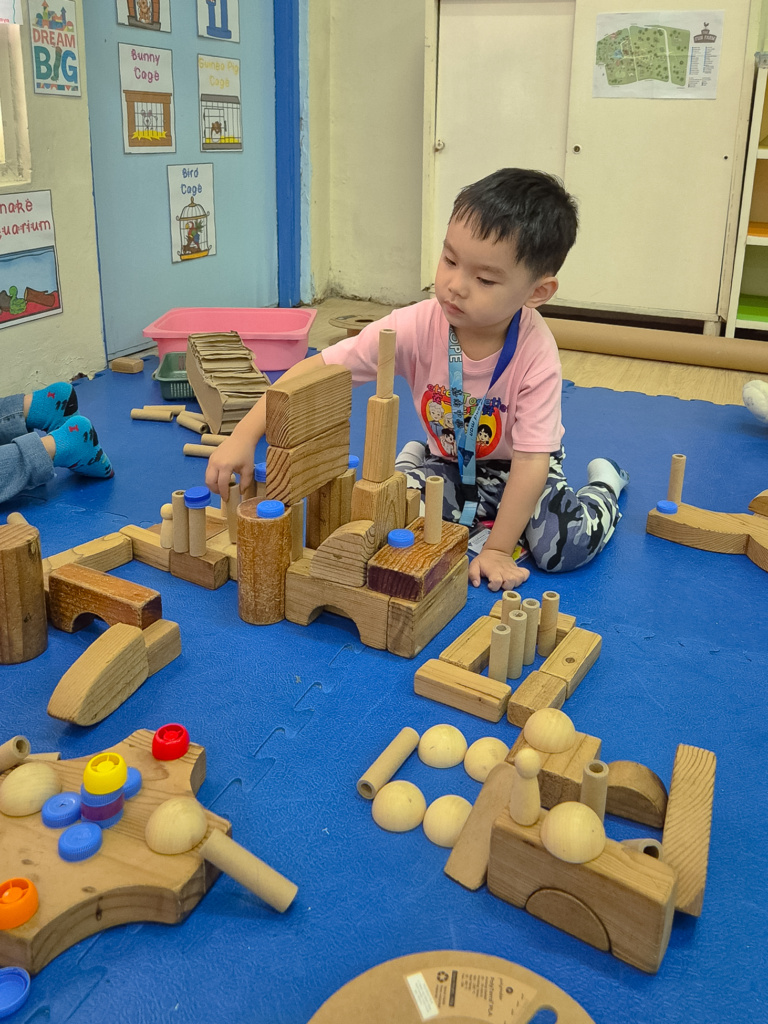
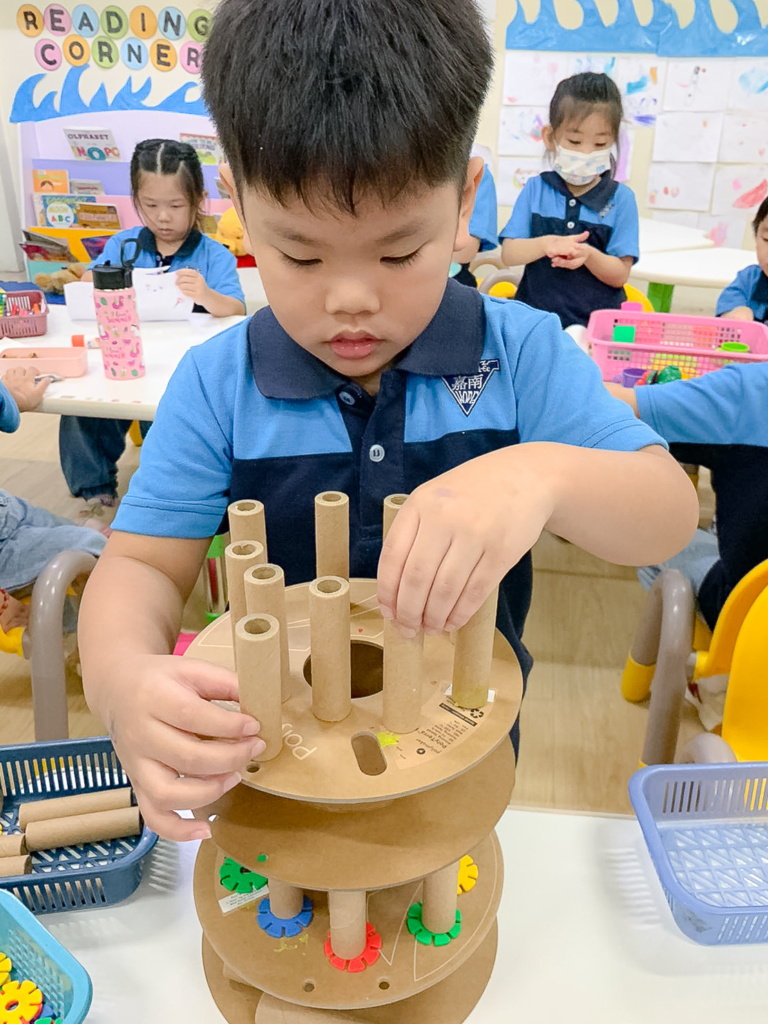
Individual Loose Parts Play
Tinkering can be collaborative too. In Loose Parts Play, the pupils can build together. “If [the pupils] want to work individually, they can but we also allow the children to work collaboratively because that’s very important to IB,” said Teacher Dang.
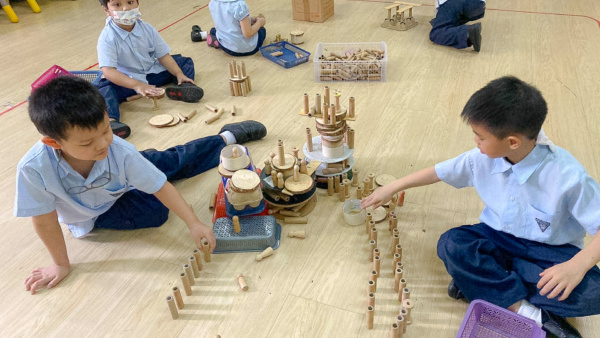
Collaborative Loose Parts Play
Although it looks fun, Loose Parts Play is not merely play. As an IB World School, Loose Parts Play, for HCHS, is a strategy that aids in developing the ATL skills of the students. Through this, young students can improve their critical and creative thinking skills as they build something out of the loose parts. They develop their communication when they explain their creation process, and enhance their self-management skills when they take turns, collaborate, and compromise with each other.
Aside from the ATL skills, the pupils learn about numeracy and literacy concepts. Just as a tinkerer thoughtfully put pieces together, young learners recognize and apply patterns and measurements in their own creations. “They use the loose parts for one-to-one correspondence, addition and subtraction,” the preschool coordinator added. As they learn about new things, and engage with their classmates in playing, the students expand their vocabulary.
The end of a tinkering project only means one thing: tidying up. It is the same thing for the preschool students when their time for Loose Parts Play is over. After making crafts of any kind, it is time to disassemble the parts again. Abiding by the only rule that exists in this learning process, the pupils need to sort the loose parts back to their respective trays. “There is an essential agreement. They have to take care of the materials, return them properly,” Teacher Dang said.
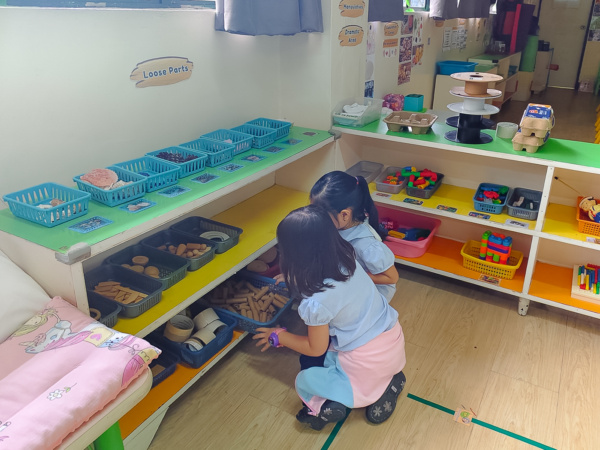
Loose Expectations with Lasting Results
Even if Loose Parts Play is just a part of the discovery routine, it has remarkably yielded significant results in the creativity of the preschool students. “The children become more creative…The simple and cheap materials can really bring out the ideas they have in mind.,” said Teacher Dang. The pupils have been observed to be really engaged with their work. They have also learned to be confident in using the loose parts.
Loose Parts Plays has been implemented at Hope since the pandemic. Over the years, parents have been supportive of this strategy. They bring loose parts to the school, and implement it in their homes when instructed. “They send us leaves, boxes, small containers, pieces of cartons, tissue core, bottle lids,” Teacher Dang revealed.
In the midst of technology-based education, Loose Parts Play affirms that hands-on experiences and open-ended materials still hold an important place in early years learning. By tinkering with the resources at hand, effective learning can still take place.
